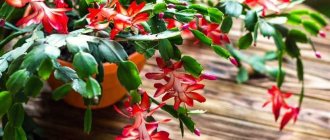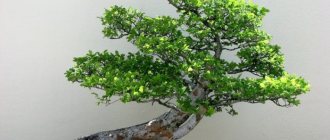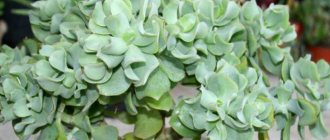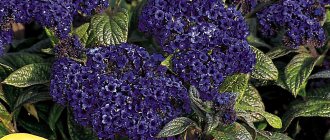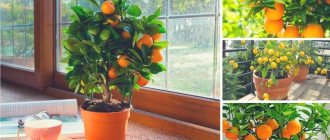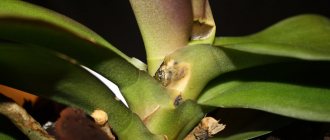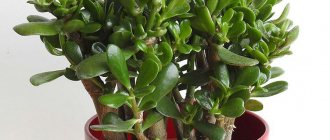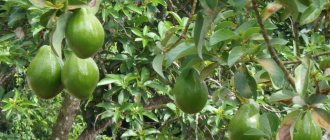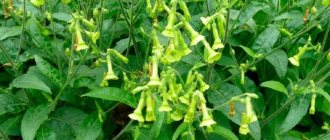Description of indoor plant
Beginning gardeners are interested in what a lemon is: a berry, a vegetable or a fruit. According to botanical features, lemon is a plant that is part of the Rutaceae family, the Citrus genus, and the Pomerantaceae subfamily.
Lemon tree - decoration of home and garden
Breeding of Pomeranians occurs when different varieties are crossed with citron. Citrus fruits differ in size, but in terms of morphological properties they belong to berries that have undergone changes in the process of varietal breeding. Lemon is the name of the hybrid fruit of this crop.
The homeland of the lemon plant is considered to be China and India, as well as the tropical islands of the Pacific Ocean. Lemon does not grow in the wild - the hybrid formed spontaneously and developed as a special species. Subtropical climate is the main condition for successful growth.
Additional Information. Lemon appeared in Russia in the 17th century. Dutch merchants brought seedlings of lemon trees to the court of the Russian emperor. The lemon caretaker took care of the useful and valuable crop.
In the CIS countries, lemon is grown in Central Asian territories and Transcaucasia (especially Azerbaijani regions, where the plant is cultivated as a creeping crop) .
Lemon trees belong to evergreen plants. With the arrival of winter, they do not shed their leaves, which are a storage and accumulator of nutrients. Plants spend reserves on the development of branches, shoots, and fruiting.
Lemon leaves are large, leathery, and rich green. They live 2-3 years and fall off gradually. A sharp drop of leaves indicates disease and the need for feeding. Loss of leaves negatively affects fruit formation.
Flowering occurs in March-April. The formation of buds occurs on young stems of this year. The showy citrus flowers have a fragrant scent. Their location (singly or in inflorescences of 3-5 pieces) is determined by the variety.
Lemon loves care
The size of the fruit and color depend on the variety: from orange-yellow to light yellow. The fruits ripen within 8-9 months.
Lemon is a remontant crop; it is characterized by simultaneous fruit development and flowering.
For culture, good lighting and warm, humidified air are preferable. The tree does not tolerate when there is a lack of moisture and lack of air in compacted soil. Temperatures of +50 °C and -7 °C are dangerous for lemon and lead to its death.
Origin of Lemon
The lemon tree belongs to the Rutaceae family, the Citrus genus. The fruit is a hybrid of lime and etrog. Most likely, the crossing occurred naturally. Wild lemons are found naturally on the mountain plateaus of India, Myanmar and China. Citrus comes from these countries.
In Europe, citrus fruit has been known since ancient times. Descriptions of this citrus are found in ancient literature and even medical treatises. It was grown in Spain, Rome, and ancient Greece.
The tree has spread widely in the Middle East. In the early Middle Ages, culture almost disappeared in European countries. It was reintroduced in the 10th-13th centuries by the Arabs. Lemon came to America along with the first colonizers of the New World.
Where are lemons grown now?
Currently, about 14 million tons of lemons are harvested annually in the world. The main producer is Mexico. 16% of all world production is grown here. Italy is in second place, followed by the USA and India. Lemon is grown in large quantities on the Pacific Islands, China, Southeast Asian countries, and northern Africa.
Previously, lemon gardens occupied large areas in Azerbaijan, Georgia, and Abkhazia, but now they have shrunk slightly. Lemons are grown in Central Asian countries: Uzbekistan, Tajikistan, Moldova. They are also supplied from Spain and Greece. Small ornamental varieties are grown at home, which bear fruit and produce 3-4 kg of fruit from one tree.
Beneficial features
Lemon tree - how lemon grows and blooms
Lemon is considered a source of valuable minerals and vitamins. Used in cooking. English lemon jam has a sour taste and a delicate consistency.
Medicine cannot do without it. Essential lemon oil has an antibacterial and wound-healing effect. It is indispensable in the following cases:
- stopping bleeding;
- elimination of headaches;
- positive impact on the psyche;
- resolution of dermatological problems;
- removal of toxins;
- cleansing the kidneys and liver;
- prevention of neoplasms;
- strengthening blood vessels and heart;
- excess weight loss;
- normalization of metabolism.
Lemon is very useful
Traditional medicine notes the benefits of lemon for diarrhea and vomiting. In the treatment of snake bites, one could not do without lemon.
Benefits of lemon
The beneficial properties of lemon have been known for a long time. Myths even arose around the fruit. For example, in Ancient Rome it was believed that it saves from poisons. In the Middle Ages it was recommended to prevent the plague. Reality has shown that citrus is powerless against this terrible disease.
Today, the following beneficial properties of the yellow sour fruit have been proven:
- Vitamin C and flavonoids improve immunity, strengthen blood vessels, and help fight infections. Ascorbic acid reduces the harmful effects of free radicals, prevents aging and cancer.
- The juice stimulates the liver, helps quickly neutralize toxic substances, and dilutes bile.
- Strengthens intestinal motility, eliminates constipation.
- Helps dissolve stones in the gall bladder and kidneys.
- The substance tangeretin, which is found in the peel, improves the functioning of the nervous system and reduces the symptoms of Parkinson's disease.
- Juice and zest regulate the functioning of the sebaceous glands, reduce hair oiliness, essential oils strengthen hair and stimulate growth.
- Lemon is used as an effective remedy against worms.
- The juice and essential oils of the peel have antiseptic properties; they are used to treat wounds and scratches on the skin.
- Vitamin P strengthens blood vessels and stops bleeding gums.
- Rutin improves vision and relieves signs of diabetic retinopathy.
- Face masks made from the pulp and zest of citrus fruit eliminate acne, oily shine, and normalize the function of the sebaceous glands of the skin.
- A decoction of the leaves lowers the temperature and relieves pain.
Lemon is contraindicated for stomach ulcers, high acidity, chronic pancreatitis, acute gastritis and enteritis.
Contraindications
Lemon is contraindicated if:
- there is an individual intolerance of the body;
- children under 3 years of age;
- allergy;
- ulcer of the duodenum or stomach;
- gastritis;
- pancreatitis;
- liver dysfunction;
- breast-feeding.
Lemon tree - caring for a houseplant
Attention! To avoid harm and preserve tooth enamel, drink lemon juice diluted through a straw. It wouldn't hurt to rinse your tongue and mouth.
Let's start planting plants
Continuing to care for the lemon tree, after a week see which seedlings are the strongest; these will have well-formed leaves.
Prepare small pots with drainage and soil and plant them in separate containers, allowing the rest in the common tray to continue to grow. Be careful with the roots of the plant, trying not to damage them when replanting.
Mix the soil in the pot with a small amount of fertilizer. It is necessary that the plant reaches a size of fifteen centimeters, after which we can transfer our tree to the garden or vegetable garden.
How to grow lemon at home
How to grow a lemon tree from a seed at home
Planting and growing a lemon tree at home is carried out using 2 methods:
- cutting;
- bone.
- The third way is to buy a lemon seedling.
It is important for novice gardeners to know how lemon grows at home and what the peculiarities of cultivation are.
A lemon tree grows up to 1.5 m at home. In order for it to grow successfully, you will need the right choice of location. A bright room in the apartment will do. It is advisable to purchase a special lamp to illuminate the crown. Manipulation will reduce the risk of lemon diseases.
If these options are not available, you will need to carefully turn the tree towards the sun every day. It is prohibited to change the location of the flowerpot or move it to another room.
Growing lemon at home
The soil is updated and the volume of the pot is changed annually. The maximum container capacity for lemon is 10 liters. Transplantation is carried out using the transshipment method. 5-year-old plants are replanted after 3 years.
Use a universal mixture for Citrus fruits, which contains equal parts:
- perlite;
- coal;
- peat;
- turf.
Temperature changes are the cause of lemon leaves drying out and turning yellow. It is important to keep the tree away from radiators that are on. Avoid overheating of the root system. The fruits set if the temperature is +17…+18 °C.
Shedding of the ovary is provoked by:
- lack of nutrients;
- dry air and soil;
- drafts;
- excess moisture:
- lack of lighting in the winter season;
- turning in different directions and changing places.
On a note. In order for the culture to develop normally, sufficient lighting is required: 8 hours in winter, 12 hours in summer. It is recommended to place it near a bright window and provide additional lighting with a lamp at a distance of 0.5 m from the lemon.
Typical Lemon Tree Problems
The most common developmental disorder is yellowing. This may occur due to:
- dry indoor air;
- lack of nutrients in the soil;
- temperature violations;
- the action of spider mites, against which the drugs Kleschevit or Fitoverm are used.
Leaf falling is associated with spider mite activity. Therefore, the leaves can be treated with a special infusion - grate 1 teaspoon of onion and leave it in 1 glass of water for 2 days.
Limited moisture in the ground or air can also cause loss of foliage or buds. If the leaves become dry and curled, this indicates a violation of the maintenance regime.
Dry air or insufficient watering can cause a situation where brown spots appear on the ends of the leaves and they dry out.
Timely control of pests - mites, whiteflies, aphids, mealybugs, scale insects - will help you grow a lemon tree at home. If the damage is extensive, then the use of insecticides is required.
With a small number of pests, you can use garlic tincture. It is crushed in an amount of 160-170 g and diluted in 1 liter of water. Then the container is closed and left for 5 days. After this, the substance is filtered, 6 g is taken and diluted in 1 liter of water. The treatment is carried out with this solution.
Homemade lemon is a plant that you can successfully grow yourself. This is not only a decorative decoration for the house, but also an opportunity to get tasty and juicy fruits.
Types and varieties for indoor growing
Systematic care and creation of the necessary conditions will allow you to grow a lemon tree at home. The correct selection of varieties is appreciated. What species are suitable for indoor growing?
Pavlovsky
When growing Pavlovsk lemon, care at home ensures growth of up to 2 m and flowering throughout the year. The lemon tree bears fruit for 3 or 4 years. The tree will be pleased with 20-40 fruits. One piece weighs up to half a kilo.
The description of the variety speaks of abundant lemon flowering. Untimely removal of excess inflorescences is fraught with the cessation of its growth.
Meyer
The hybrid variety leads in popularity. It was created by crossing grapefruit with lemon. The low tree bears fruits 3 or 4 times annually; fruits weigh up to 150 g. Meyer lemon requires thorough care:
- spraying foliage;
- protection from drafts;
- enough light.
Excessive lighting is undesirable due to inhibition of flower setting.
The green pet will bear its first fruits at four years.
Meyer lemon blossoms
Chinese
If you cross an orange with a lemon you get this variety. When the variety is properly cared for, it blooms beautifully and bears fruit well. Often used for medicinal purposes.
Chinese lemon
Anniversary
The undemanding variety reaches 1.2 m. Ideally adapts to home conditions. An unpretentious crop grows in partial shade.
When flowering, it is covered with abundant white and purple buds. The weight of early ripening fruits varies from 300 to 500 g. The shape is round or oval. The taste is excellent.
Genoa
Belongs to a rare type of lemon. Fruit weight is on average 110 g. Adults bear up to 180 fruits annually. The skin of the fruit is edible, without bitterness, the flesh is tender. The lack of light in the required amount affects the poor development of lemon.
Lisbon
The Australian variety is cultivated with success indoors. The height of the tree is average. Oval-elongated fruits with a wrinkled tip and thin shiny skin. The pulp has from 9 to 11 lobules.
Lemon Lisbon
The fruit usually has 4-5 seeds and a pronounced aroma. Fruits are easily transported and stored.
Maykop
The creation of a variety of folk selection dates back to the city of Maykop, where amateur gardeners grew a lemon tree by selecting seedlings. The yield of an adult lemon tree is 300-350 fruits.
The plant adapts well to unfavorable indoor conditions. Advantage: dwarfism.
Buddha's hand
Lemon is also called Corsican lemon, or palmate lemon. It has an unusual shape - a half-closed hand with fingers.
The fruit-bearing citron loves warmth and is afraid of cold. Reaches a height of 1.5 m. The intense green leaves are large, slightly wavy, shiny. The color of large buds is white with a reddish tint.
Unusual lemon - Buddha's hand
The length of citrus fruits is sometimes 40 cm. The fruit weighs up to 500 g. The color is yellow, sometimes orange specimens are found. The citron peel is dense, reaching a thickness of 2.5 cm. Externally, the fruits are similar to bananas. The plant has a wonderful aroma.
Ponderosa
The height of the tree reaches 1.8 m. The distinctive features of the fruit are their size and shape: pear-shaped on top and spherical on the bottom. The skin is too rough and thick, lumpy, matte. The light yellow flesh is similar to an orange, but sweeter. The fruit includes:
- ascorbic acid – 40-80 mg;
- citric acid – 5-8%;
- sugar – 2.5%.
The lemon tree is decorative when it blooms and bears fruit.
Volcano
It is a hybrid of kumquat and lemon. The tree is characterized by a decorative appearance and compact size. The diameter of the fruit is 4 cm, the taste is sour and bitter.
Lemon Vulcan
Lunario
The variety, in demand among florists, bears fruit twice a year. At the flowering stage, you can see ripened fruits and flowers along with the ovaries. The growth of the Lunario lemon plant is from 0.8 to 1.5 m.
Novogruzinsky
Designed for enclosed spaces. The medium-sized tree has a spreading crown. The oval fruit has a wide, blunt protrusion at the end. The peel is pale yellow, smooth or rough, thick.
Variety Novogruzinsky
The juicy pulp usually has 9-12 segments. There are few seeds: from 2 to 6 pcs.
Description of the tree
The citrus lemon plant is an evergreen tree with a height of 3 m to 9 m. Its bark is gray with cracks. Young shoots are smooth, covered with green or red-violet bark. The branches are covered with thorns, but there are species without thorns.
The leaves on the branches grow alternately. They have an elongated oval-ovate shape, with pointed leaves on both edges. Their length is about 15-20 cm, width - 5-8 cm. The leaf blade is fleshy, with smooth, solid edges, shiny, glossy above, matte below, rich green color. The veins are clearly visible on the plate. If you examine it in the light, small pinpoint reservoirs of essential oil are visible. The leaves have a pronounced citrus aroma.
The cuttings are short, up to 1-1.8 cm in length. On young shoots they are winged, on old shoots they are wingless. The articulation with the leaf is well defined. There is an interesting fact: the leaves fall separately from the cuttings, approximately once every 3 years. This means that the structure of the lemon leaf is complex (it is in such plates that leaf fall is observed separately from the cuttings). During the process of evolution, reduction of other parts of the leaf occurred.
Lemon flowers are small, up to 2-4 cm in diameter, with a pronounced citrus scent. The corolla is white, with 5 petals. The outer part of the petals is pink or pink-violet. The buds develop over 4-5 weeks, flowering lasts 7-9 weeks. The peak occurs in April and May, although flowers on the branches develop throughout the year.
Uzbek Tashkent orange lemon: description and care
Optimal conditions for Tashkent lemon are if the temperature is +18…20°C. In summer, sometimes the crop is taken out onto the loggia in the absence of strong sunlight.
Lemon tree Tashkent variety
Watering mode
It is not recommended to water Uzbek lemon frequently. 2-3 waterings per week are enough. Use settled water. The alkali content in the water changes the acidity of the soil where the seedling grows. For the tree, this is fraught with death - it likes a slightly acidic substrate. In the winter season, moisture is reduced.
Orange lemon benefits from moisture in the air around the tree. You will need to spray the plant twice a day in hot weather. When the crop is located near heating devices, the air is periodically humidified.
Top dressing
Guests from Uzbekistan are fed:
- ash;
- humus;
- saltpeter;
- mineral fertilizers;
- potassium;
- superphosphates.
Important! The soil is not fed for the first year. Complex fertilizers are applied for 2-3 years with the arrival of spring and autumn.
Meyer lemon: description and care at home
The Meyer lemon tree requires good lighting: at least 12 hours a day. When daylight is short, artificial lighting is just right, otherwise the lemon will shed its leaves and die.
An unheated room is not the best place for a tree.
Feels comfortable in the summer at a temperature of +20 °C, in the winter season – +12…+15 °C. When outdoors in summer, provide shade for the shrub from direct sunlight.
Watering mode
Watering the lemon is carried out at the root and along the foliage. At the same time, moisten the soil and spray the leaves with a spray bottle. In the spring-summer season, the manipulation is repeated twice daily: in the evening and in the morning. In autumn and winter, the frequency of watering per week is increased to 2 times. Drying out the earthen clod is fraught with the death of the lemon.
Top dressing
During the growing season, gardeners feed the crop once every 14 days from March to November. Apply fertilizers that contain nitrogen, phosphorus or potassium.
Attention! To improve the productivity of mineral fertilizers, once every 2-3 months the soil is sprayed with a solution of copper, boron, zinc, molybdenum, iron or manganese.
For the winter, plant feeding is stopped.
Description and composition of fruits
The lemon hesperidium, or fruit, has an elongated shape. It has a large nipple at the top. Its length is 6-9 cm, diameter is 4-6 cm. The peel is light yellow, yellow or yellow-orange. It is lumpy and difficult to separate from the pulp. If you squeeze a piece of skin, essential oils begin to release abundantly. When cut, the fruit looks like an asterisk with 8-10 rays.
Inside there are 8-10 slices, separated by a thin film and tightly adjacent to each other. The pulp consists of dozens of small bags filled with juice. The taste is sour, some varieties have a sweet and sour taste. The color of the pulp is yellow or yellow-green. Inside the lobules, closer to the center, there are seeds with embryos. They are white or cream in color. There are also seedless varieties.
The fruit has a sour taste
The lemon fruit ripens in September or October. At first it is green, then gradually turns yellow. It does not fall from trees and can hang on a branch for up to 2 years. During this time, changes occur in lemons. They increase in size, turn green, and then turn yellow again. Their taste is thus lost.
Lemon composition
Lemon fruits contain a large amount of useful substances. Brief description of its main composition (per 100 g of product):
- proteins - 0.9 g;
- fats - 0.1 g;
- carbohydrates with monosaccharides and disaccharides - 4.9 g;
- fiber or dietary fiber - 1.3 g;
- pectin - 0.5 g;
- organic acids - 5.7 g;
- ash or dry minerals - 0.5 g;
- calorie content - 33 kcal.
Lemon contains almost half the daily dose of ascorbic acid required for humans - 40 mg per 100 g. The fruit is rich in carotene, it contains vitamins B1 and B2, folic acid, niacin or vitamin PP. Citrus contains a lot of potassium, about 160 mg. It is rich in iron, which is why it is recommended to eat the fruit if you are anemic. Lemons also contain calcium and phosphorus, which have a positive effect on the skeletal system. Of the microelements in the fruit, the most are copper, zinc, and manganese.
In addition, the composition includes coumarins and galacturonic acid. There is 3 times less sugar in the pulp than in oranges, 4 times less than in tangerines and 2.5 times less than in grapefruits. This fruit is superior to other citrus fruits in terms of vitamin C content. No wonder it was used to treat scurvy.
Pavlovsk lemon: description and care at home
Watering mode
Lemon is sensitive to soil moisture in the pot. Drying out of the soil and excess moisture are the reasons for slowing growth, dropping leaves and stopping fruiting.
Water the tree 2-3 times weekly in summer, once a week is enough in winter. Changes in the frequency of humidification are associated with the characteristics of the room. The dryness of a clod of earth is determined by touch and the frequency of watering is adjusted. Moisten the soil abundantly. Rainwater is ideal. They use water from the pond. Tap water must settle.
Important! Do not allow liquid to stagnate at the bottom of the container, otherwise the roots are at risk of phytodiseases and rotting.
Top dressing
The introduction of nutrients into the flowerpot begins 6 months after transplanting into new soil. Deficiency is indicated by pale and curled tips of leaf blades.
Diluted horse manure in a ratio of 1:15 is effective for homemade lemon. In urban conditions, complex fertilizers are used for citrus plants. They are characterized by accessibility, safety and ease of use. The dosage is calculated based on the recommendations on the packaging.
Why does a lemon get sick?
Like any living thing, a citrus tree can become sick. Causes may include improper care, pathogens and diseases.
Errors in care
- insufficient or excess light;
- irregular watering;
- incorrectly selected soil composition;
- lack of vitamins;
- damage to roots during transplantation.
Important: yellow leaves on the tree mean a lack of magnesium and iron.
Fungal infections
Excess moisture causes the development of fungal infections. Weaker shoots are susceptible to it. Affected inflorescences and leaves should be cut off, and the tree should be sprayed with a preparation containing copper:
- scab;
- sooty fungus;
- powdery mildew;
- homoz;
- root fungus.
Sick lemon
Lemon Panderosa (Ponderosa): description and care at home
Ponderosa is almost never grown in open ground due to the excessive size of the fruit and low yield. Old trees produce a maximum of 10-15 fruits; indoors the yield is even lower - 2-5 pieces.
Watering mode
The lemon tree is not afraid of dry air, but it likes spraying. In winter, at high temperatures at home, it doesn’t hurt to place a bucket of water next to the crop. When the summer is dry, the air is humidified. In rainy weather, open the window.
Watering homemade lemon
When watering, completely moisten the earthen ball. The next watering is carried out when the soil has dried to 2 cm in depth.
Top dressing
Recharge regularly. Fertilizers for citrus fruits are preferable. They contain the necessary nutrients for lemon, as well as a complex that acidifies the substrate. When fertilizing with other fertilizers, add a few drops of lemon juice to the water every month.
During the warm season, they are fed systematically: once every week and a half. Keeping the tree at low temperatures does not require fertilizing.
Planting methods
If you want to plant a lemon tree on your property, then you have only two ways. The first involves the use of seeds, the second is carried out using a cut branch.
With the first method everything is clear; many of you have already had the possible idea of planting a seed of some fruit. Alas, lemon grows only in open ground and is not entirely suitable for home “keeping.”
In the store, choose the ripest, uniformly colored fruit. A good sign of ripeness for citrus fruits is the natural pleasant smell when you bring it to your face. A rare type of lemon does not contain large seeds, so you should not have any problems here.
You plant several in a pot, out of three, one will definitely grow. A lemon seed tree begins to bear fruit after an average of eight years. Unlike a seedling, for which this period is two times shorter.
It is more difficult to find a suitable tree to cut a branch from, but such a seedling will completely copy its parent genetically, which will affect the frequency of fruit growth, their juiciness, and so on. In the case of a seed, everything is different, since the genetic material will be diluted.
New Zealand lemon: description and care at home
When grown in soil, the hybrid can withstand frosts down to -5°C. You rarely see it in open garden beds. Lemon is in demand for home cultivation.
On a note. This variety of plant is not cultivated in New Zealand.
Watering mode
New Zealand lemon is watered 2 times a week indoors. During the active growing season, from late spring to early autumn, the soil is moistened daily in small portions. Moisten with settled lukewarm water.
Spraying leaves
When the air in the room is dry, especially in winter, foliage is sprayed with warm liquid in a moderate volume.
Top dressing
Tree fertilization is carried out according to the age and growth period. Seedlings are fed after 1.5-2 months, adults are fed in spring and summer after 2-3 weeks. With the onset of autumn, the frequency of fertilizing decreases and stops for the winter period.
Fertilize the lemon with mineral mixtures for flowers, organic matter, which is diluted with water: ash extract, fresh manure, herbal infusions (birch or quinoa, half a jar of leaves is poured with boiling water and allowed to brew in the dark for 2-3 days).
Lemon feeding
Before feeding, the tree is watered 2 hours in advance so that the nutrients are better absorbed.
Lemon Novogruzinsky: care at home
According to the characteristics, the variety gives a generous harvest every year. The tree bears fruit in the 4th or 5th year, later than other varieties.
Watering mode
Correct watering is responsible for the healthy development of roots, foliage, and fruit ripening. With water, lemon receives nutrients. The watering regime is determined by the season and the growth activity of the crop: from May to September, daily watering is carried out; from October to mid-spring water 1 or 2 times weekly.
Water the plant with a moderate amount of water. Excessive soil moisture causes root rot and leaf damage. Watering the lemon tree is carried out with liquid at a temperature of +20…+25 °C. Spray the lemon with water twice a week in the summer, and 2 times a month in the winter.
Note! Do not overdo it with moisturizing the foliage, otherwise mold will develop.
Top dressing
The plant grows quickly, the soil is depleted. Ripe lemons require more fertilizer. In spring and summer, fertilize once every 2-3 weeks. In winter, additional mineral supplements will be required.
When the lemon does not rest in winter, it is fed once a month. The culture needs mineral supplements and organic matter. Diluted manure will come in handy.
The influence of feeding on the development of citron
Nitrogen is obtained from organic substances and complex fertilizers. Liquid mineral mixtures are preferable. The intensive growth of the New Georgian lemon and the lack of fruiting will require an increase in phosphorus in the feed. You can refuse organics during this period.
Why lemons don't bloom at home
Often, a lemon tree blooms intensely, but the ovaries soon fall off and fruits do not form. Among the reasons why lemon does not bloom are:
- No cross-pollination. To solve the problem, transfer pollen yourself during the flowering period using a brush or cotton swab.
- Damage to crops by pests.
- There is no rest period. Lemon did not regain his strength.
- Nutrient deficiency. Regular replenishment is required.
- Lack of light.
The way a lemon blooms determines not only diseases, but also the suitability of the container for the lemon.
For proper care, an indoor lemon will thank its owner and delight it with sunny fruits. The main thing is patience and desire.
